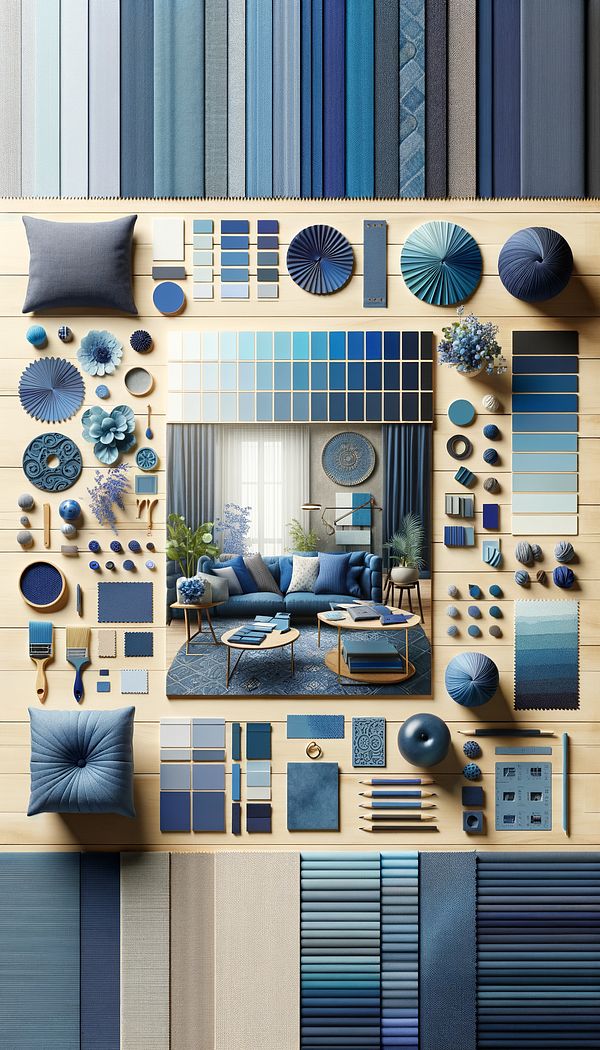What is Shade?
Shade refers to a darker version of a color, created by adding black to the original hue.
Description
In the realm of interior design, understanding the concept of "shade" is fundamental to mastering the use of color. It plays a crucial role in creating depth, contrast, and visual interest within a space. When we talk about a shade, we refer to a hue that has been darkened by the addition of black, making it appear deeper than its original tone. This is distinct from "tint", which involves lightening a color by adding white, and "tone", which modifies the color by adding grey.
Utilizing shades effectively can dramatically transform the atmosphere and perceived size of a room. Darker shades tend to make spaces feel more intimate and cozy, whereas lighter shades offer a sense of openness and airiness. This dynamic is critical in color scheming and selecting the perfect paint or fabric colors for an interior. Moreover, playing with shades can help in highlighting architectural features or artworks, creating focal points that draw the observer's eye.
The choice of shade can also be influenced by the style of the space. For instance, darker shades might be preferable in a rich, traditional setting, while modern and minimalist designs may opt for lighter shades. This decision can significantly impact the mood and style of the living environment.
Usage
Designers often use shades to evoke a specific mood or style within a room. For example, choosing a deep navy shade for a bedroom wall can lend a serene, sophisticated atmosphere. On the other hand, incorporating darker shades of green in a living room's decor might create a cozy, earthy feel. Shades are also crucial when selecting materials and textiles, such as choosing the right shade of wood for flooring or furniture to complement the overall design theme.
FAQs
-
How do I choose the right shade for my room?
Consider the room's size, natural lighting, and your desired mood. Dark shades can make a room feel smaller and cozier, while light shades can make it feel larger and more open. Experiment with samples and swatches to see how various shades look in different light conditions.
-
Can I use multiple shades of the same color in one room?
Absolutely! Using different shades of the same color can add depth and interest to a space. This technique, known as monochromatic color scheme, creates a cohesive and sophisticated look.
-
How does the concept of shade differ from tint and tone?
Shade refers to a color that has been made darker by the addition of black. Tint is achieved by adding white to a color, making it lighter. Tone involves adding grey to a color, which both lightens and dulls it. Understanding the difference is crucial for creating the desired effect in your interior design projects.
Practical Application
When planning the color scheme for a space, consider the shades carefully. Start with the color you love and then explore its darker versions by adding black in varying amounts. This will help you create a rich, layered look. Use darker shades on accent walls or furniture, and lighter shades for the larger surfaces to maintain a balanced atmosphere. Always test your chosen shades in the actual room, as lighting can significantly impact how a color is perceived.
-
Allyways PatternAlleyways Pattern refers to a specific visual motif inspired by the narrow passageways found between buildings, often featuring repetitive geometric lines or shapes evoking the sense of narrow, linear spaces.
-
MarquetryMarquetry is the art of applying pieces of veneer to a structure to form decorative patterns, designs, or pictures.
-
Bracket FootA bracket foot is a decorative foot on a piece of furniture, characterized by its curved or scrolled outline.
-
BurlBurl is a tree growth in which the grain has grown in a deformed manner.
-
TactilityTactility refers to the sensation and quality of touch in materials, textures, and objects within an interior space.
